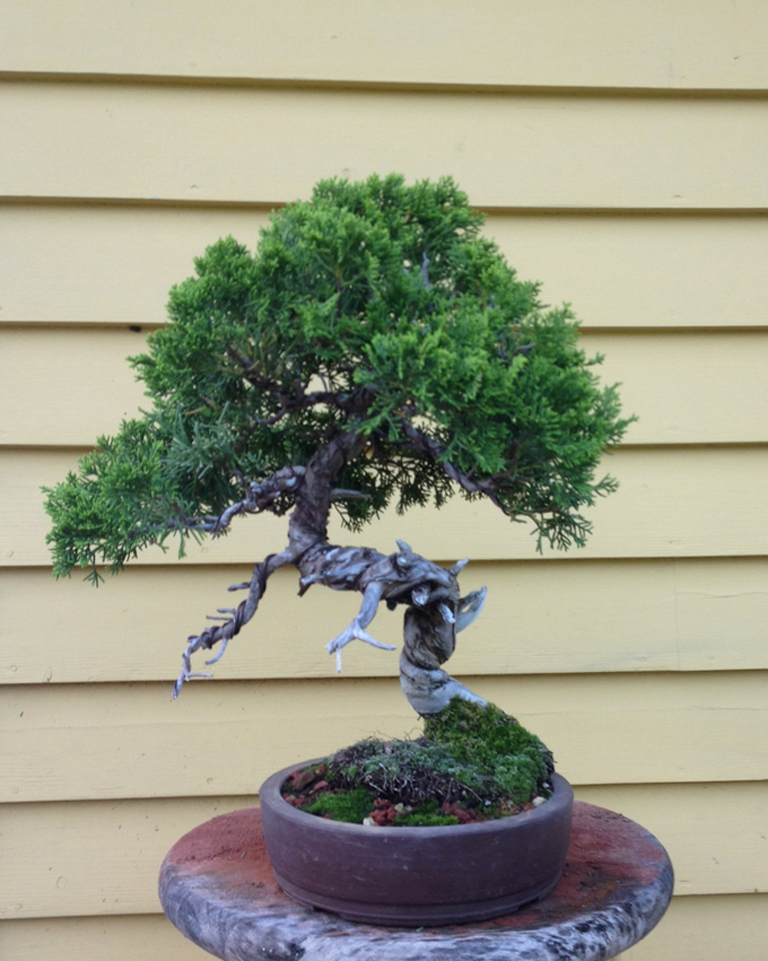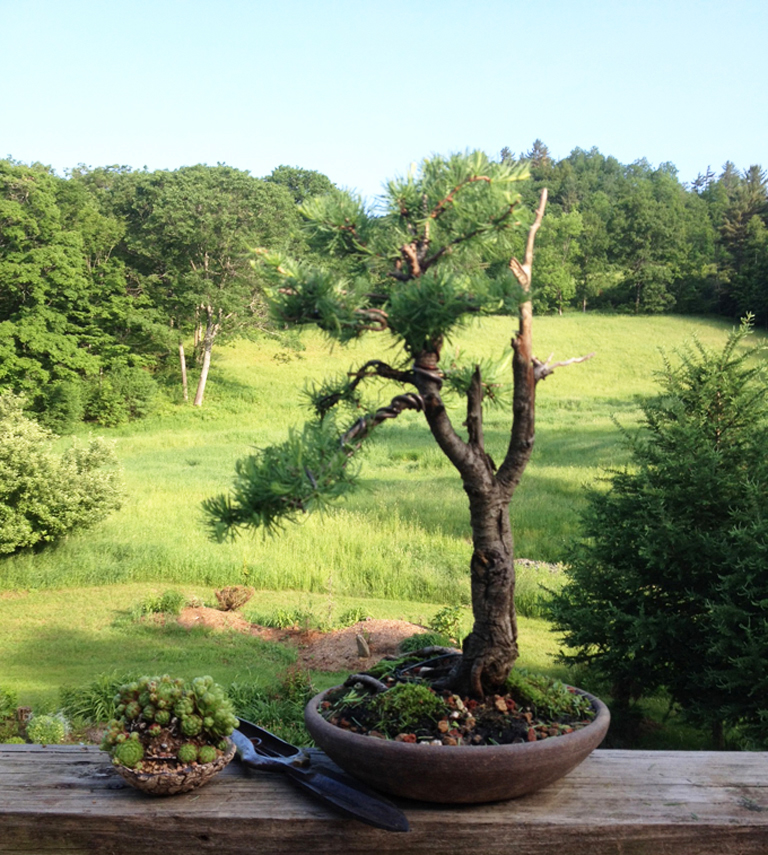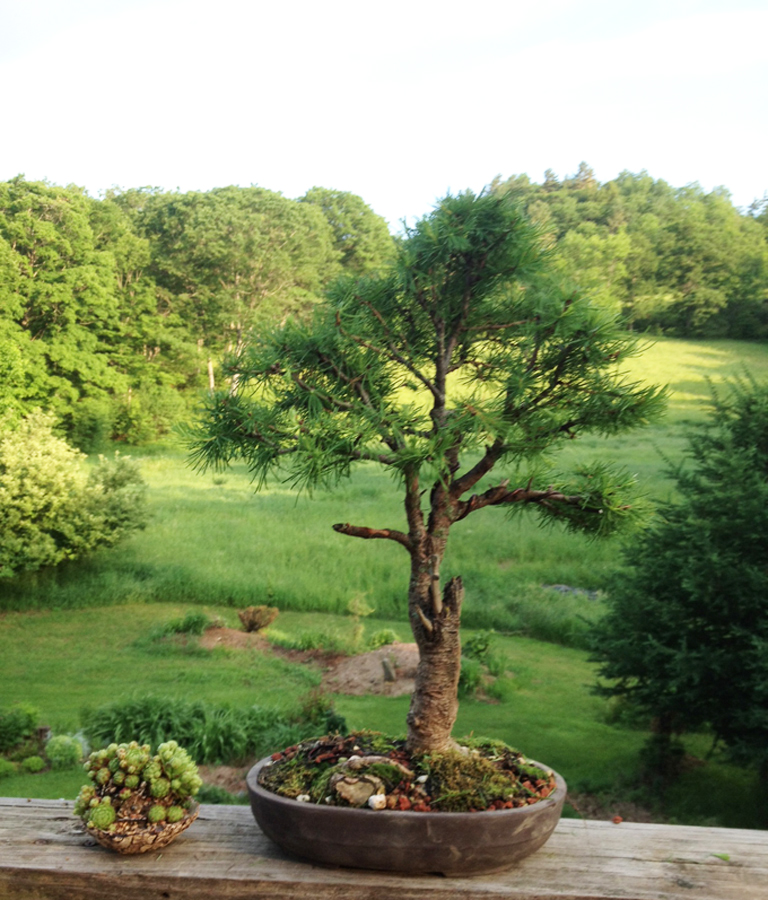 A little shaggy and the pot is dirty but it’s about the moss, our Masters Bonsai Soil and a post we did a while back.
A little shaggy and the pot is dirty but it’s about the moss, our Masters Bonsai Soil and a post we did a while back.
An important issue came up in a post we did a while back about our Masters Bonsai Soil. The comment that provoked the question was by Andy Rutledge. Here’s what Andy said: Soil particulate size, especially at the surface, is important. These photos, the latter two especially, indicate problems in tree health will arise in the coming growing season. Be careful.
In a follow-up comment Andy goes on to say: …particle size necessarily varies due to vertical position/layer in the pot, tree maturity, pot size, tree-to-pot proportion, pot depth, soil material (is it inert? organic?),etc….in the lower two photos above, the more important factor is the size and depth of the pot. The surface material should be much smaller in order to properly maintain moisture retention; especially since this appears to be an almost completely inert mix. There’s more but this will do for our purpose now.
Though I don’t know if Andy would agree, but my solution is moss. Moss slows down the drying process, especially on the surface. At the risk of stating the obvious and of over simplifying what Andy said; if the surface dries too fast, the roots closest to the surface will suffer and the rest of the tree will follow.
So far the moss solution has worked. It’s true that the hottest days of summer are in front of us, but we’ve already had several days around 80F and sunny, so I’m optimistic.
 Here’s a freshly cut back native Larch (Tamarack) that I transplanted into our Masters Bonsai Soil about 7 weeks ago. I left some open spots for aeration and as places to apply some slow release fertilizer. As you can see, I also left the Sword Shears I used.
Here’s a freshly cut back native Larch (Tamarack) that I transplanted into our Masters Bonsai Soil about 7 weeks ago. I left some open spots for aeration and as places to apply some slow release fertilizer. As you can see, I also left the Sword Shears I used.
 More evidence and another dirty pot (I sometimes rail against other people’s photos with dirty pots). This Larch, which appeared in the aforementioned earlier post, was also transplanted about 7 weeks ago.
More evidence and another dirty pot (I sometimes rail against other people’s photos with dirty pots). This Larch, which appeared in the aforementioned earlier post, was also transplanted about 7 weeks ago.
To moss or not to moss? At our Bonsai Association, the teacher tells us to avoid moss at all costs, except for exhibitions. The reason is that moss destroys the bark and consequently the trunk. It is advised that we maintain a simple surface of akadama and that if we wish to display the tree, then plant the moss for the occasion and remove it right afterwards. Any comments? Send me the reply to my email as well, if possible please. Thanks.
The birds love my moss more than I do so I have to cover the base of trees with close weave netting if I put moss on them consequently I only have moss on a few trees.
Hello Miguel, I was also taught about the evils of moss on bonsai but I’ve overcome this prejudice with experience and have found that in our warm dry climate it is a huge plus to have the surface of the soil covered with moss, especially with the open, rocky bonsai soils. I now have fine roots all the way to the surface and by the way I definitely keep the moss off of the trunk and the surface roots. Dare to rebel.
Hi Miguel,
You can avoid the effect of moss on the trunk by removing it where is grow too close.
Though I didn’t mention it in the article, I have experimenting with a layer of Akadama on the surface in order to slow down the drying process. I’ve even used moss and akadama on the same tree.
Hi Carol,
Thanks for contributing to this on going moss or no moss debate.